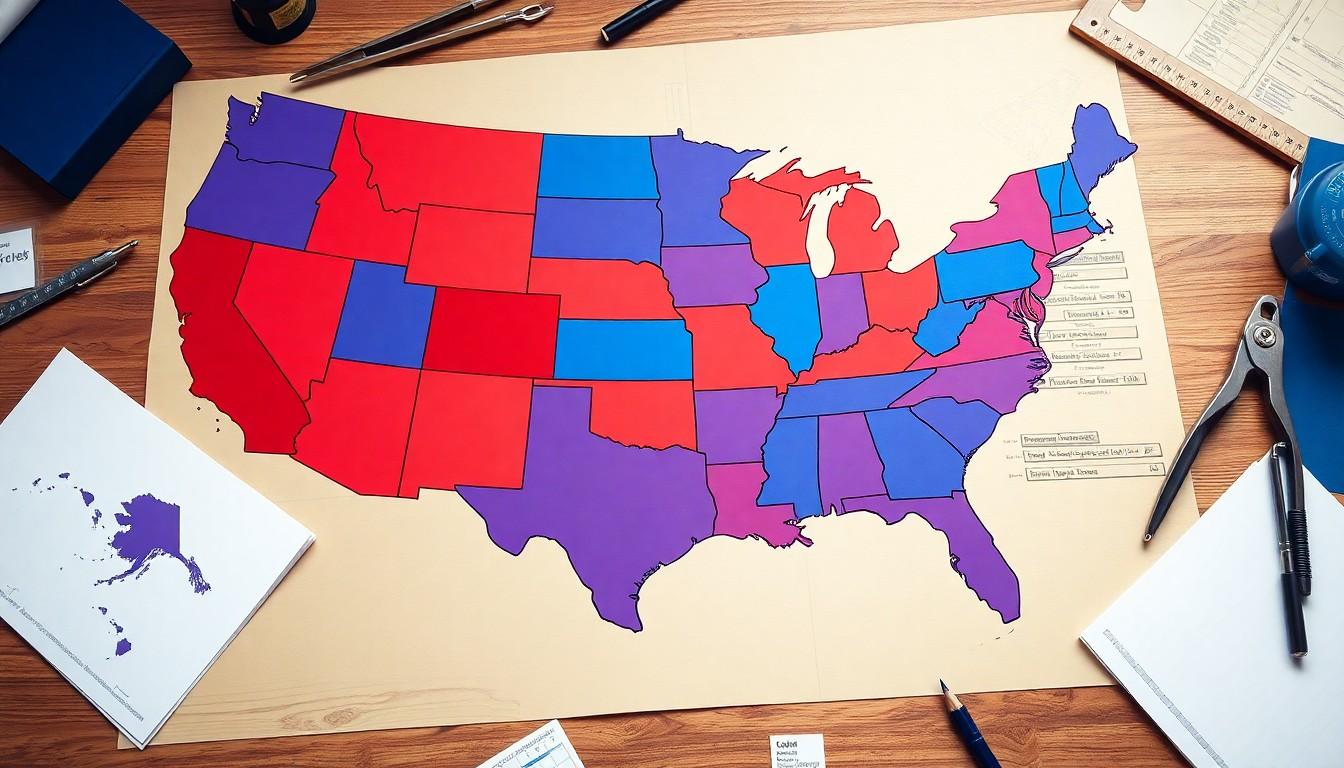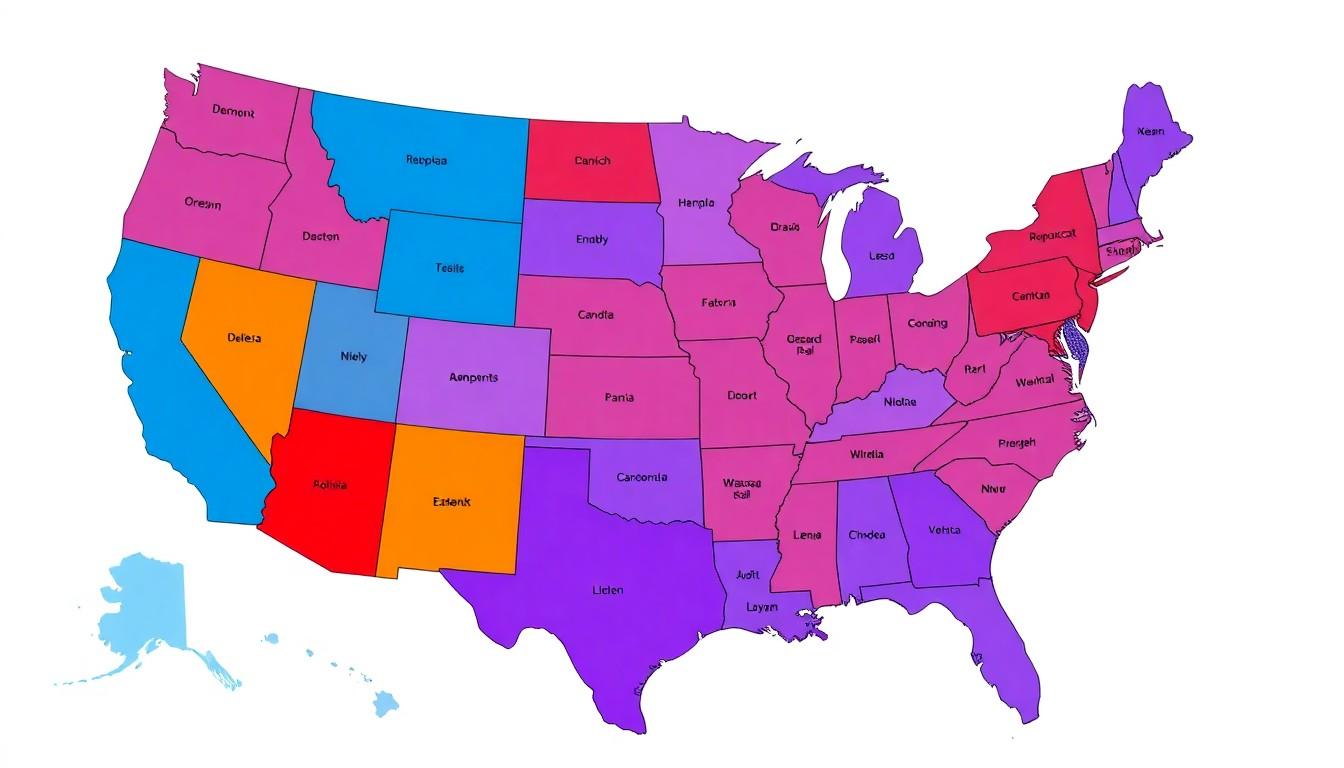The Best Fluffy Pancakes recipe you will fall in love with. Full of tips and tricks to help you make the best pancakes.

USA Map Political: Unlocking the Secrets of America’s Electoral Landscape
Navigating the political landscape of the USA can feel like trying to find your way through a maze—blindfolded. With each state boasting its own quirks and political leanings, understanding the political map is crucial for anyone looking to make sense of the nation’s ever-evolving dynamics. Whether you’re a political junkie or just someone who wants to avoid awkward conversations at family gatherings, knowing the ins and outs of the USA’s political map can make you the star of any debate.
Overview Of USA Map Political
A political map of the USA illustrates the boundaries and affiliations of each state. This map categorizes states based on their political leanings, showcasing democratic, republican, and swing states. Understanding these divisions helps clarify the overall electoral landscape.
Different coloration often indicates various political affiliations. For instance, blue represents states that typically support the Democratic Party, while red signifies those leaning toward the Republican Party. Purple or light blue shades symbolize swing states, where voter support is more evenly divided.
Familiarity with regional political trends is important. Each state’s unique political makeup influences local governance and policy decisions. States such as California and New York are known for their strong liberal positions, while Texas and Alabama tend to lean conservative.
Historical data can also provide context. Examining past election results reveals shifts in political dynamics over time. Notable changes might occur in states like Georgia, which has recently experienced a transformation from a strong Republican base to a more competitive political environment.
Engagement with political maps enhances one’s understanding of national trends. Political analysts and enthusiasts find these maps useful tools for visualizing electoral patterns. They also aid in predicting outcomes during elections by highlighting voter demographics and turnout trends.
Utilizing interactive political maps adds another layer of depth. These maps allow users to explore specific election cycles and real-time voting data. Modern technology enables a more comprehensive analysis of each state’s political landscape, contributing to informed discussions around the complexities of American politics.
Key Features Of USA Political Maps

Political maps offer vital insights into the geographic boundaries that define the political landscape of the United States. Understanding these features aids in grasping the nation’s electoral dynamics.
Boundary Lines
Boundary lines delineate the borders between states, which define political jurisdictions. Each line reflects electoral districts that impact representation in Congress and state legislatures. These districts may change due to redistricting, often influenced by population shifts and census data. Local governments adapt to these boundaries, determining how policies are implemented. Changes in boundary lines frequently result from political maneuvering, providing insight into the strategic considerations during elections.
Color Coding
Color coding significantly enhances the clarity of political maps. Typically, blue represents Democratic states, red indicates Republican states, and purple signifies swing states. This system quickly conveys political affiliations and voting trends, allowing viewers to easily grasp the landscape. Major elections highlight shifts among states, emphasizing how regional preferences can evolve. Visual representations guide understanding of electoral dynamics, showcasing areas of contention in upcoming elections. This clear differentiation fosters informed discussions among political enthusiasts and analysts alike.
Importance Of Political Maps
Political maps serve essential roles in understanding the American political landscape. They offer insights into state boundaries, political affiliations, and electoral trends.
Educational Purposes
Political maps are valuable educational tools that enhance knowledge of governmental structures. Students and educators use these maps to study the political divisions that shape the country. Understanding state characteristics fosters informed discussions around local and national politics. Such maps clarify how policies affect residents in different regions. They also illustrate historical election data, which helps analyze shifts in political allegiances over time.
Political Campaigns
Political campaigns utilize maps to strategize and target voters effectively. Campaign teams analyze electoral maps to identify key swing states and regions with varying political leanings. This information allows for tailored messaging that resonates with specific audiences. Additionally, political maps guide candidates in allocating resources efficiently, maximizing outreach during election cycles. Accurate visual representation of state affiliations aids in forecasting election outcomes and identifying areas of potential growth or challenge.
Tools For Creating Political Maps
Various tools assist in generating political maps. These resources help visualize political landscapes and user-defined data effectively.
Online Mapping Software
Online mapping software offers user-friendly platforms for designing political maps. Popular tools include Google Maps, ArcGIS Online, and Mapbox, which allow customization of data layers and map styles. Users can integrate demographic information, election results, or voting patterns to create detailed visualizations. Interactive features often enable real-time data analysis, making it easy to explore various electoral outcomes. Additionally, these tools support collaboration, allowing multiple users to work on a single project, which increases efficiency in map creation.
Traditional Mapping Techniques
Traditional mapping techniques remain relevant in creating political maps. Hand-drawn maps provide a personalized touch, while printed maps can highlight specific regions or trends. Cartography skills play a crucial role in understanding geographical relationships and boundaries. Techniques like color shading or hatching effectively denote political affiliations. Additionally, integrating historical election data into these maps enhances their educational value, allowing deeper insights into shifting political dynamics. Despite advancements in technology, these methods maintain importance for specific applications and audiences.
Conclusion
Understanding the political map of the USA is crucial for anyone looking to engage with the nation’s complex political dynamics. The visual representation of state affiliations and electoral trends not only aids in grasping current political climates but also enhances discussions around policies and elections. As political landscapes evolve, staying informed about regional shifts and utilizing interactive tools can provide deeper insights into voter behavior and campaign strategies. Embracing these resources fosters a more informed citizenry, capable of navigating the intricacies of American politics with confidence.
